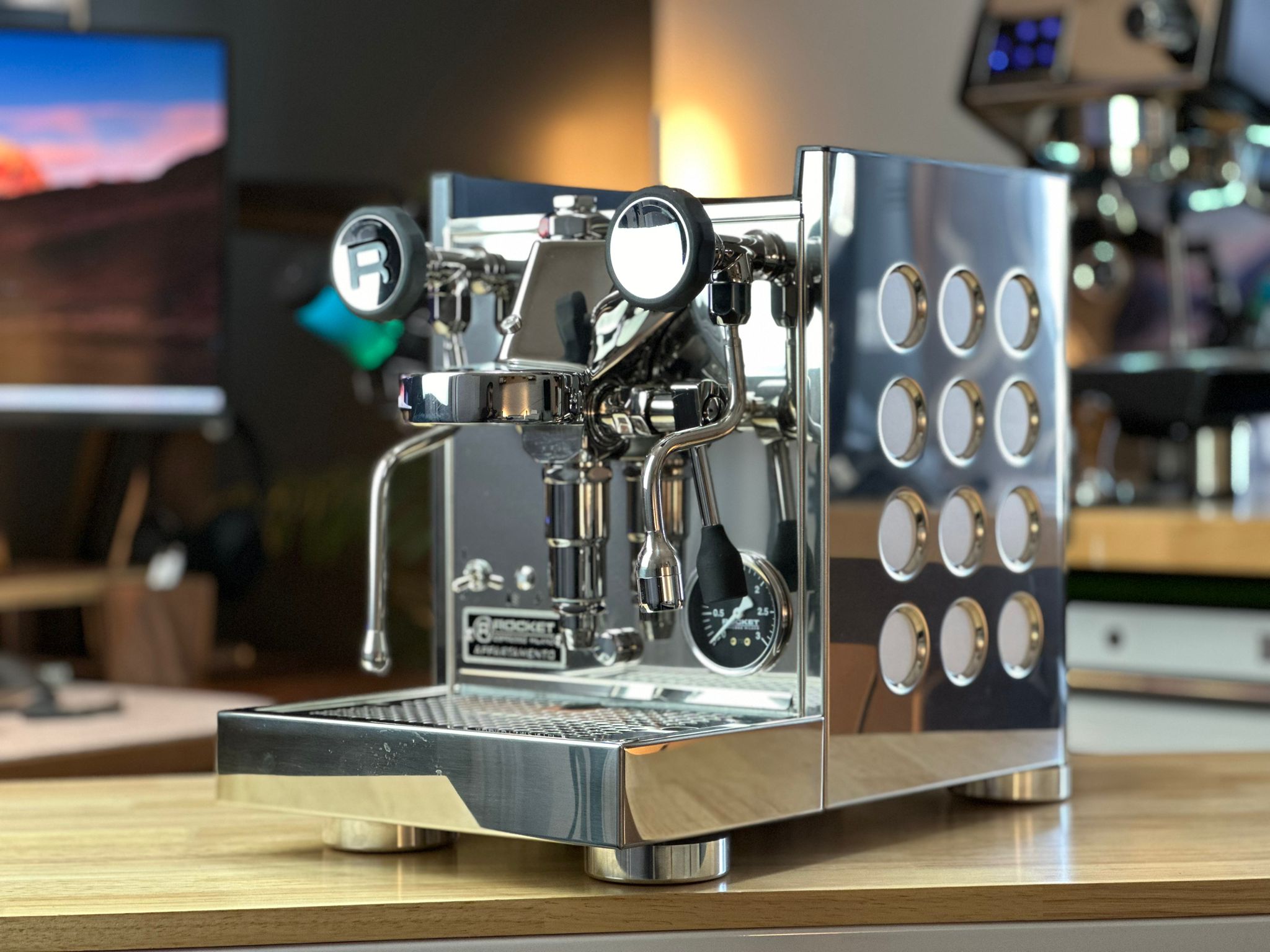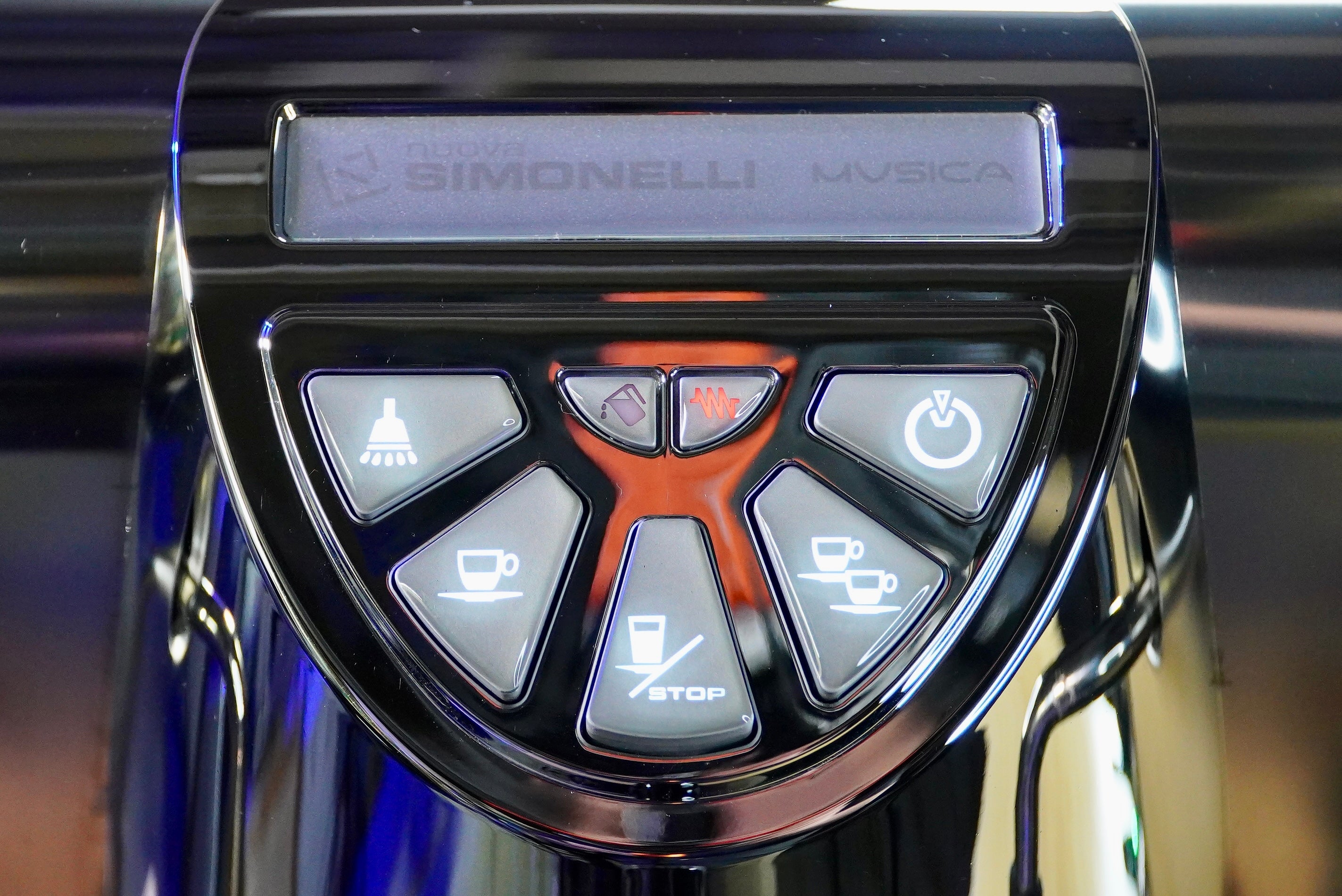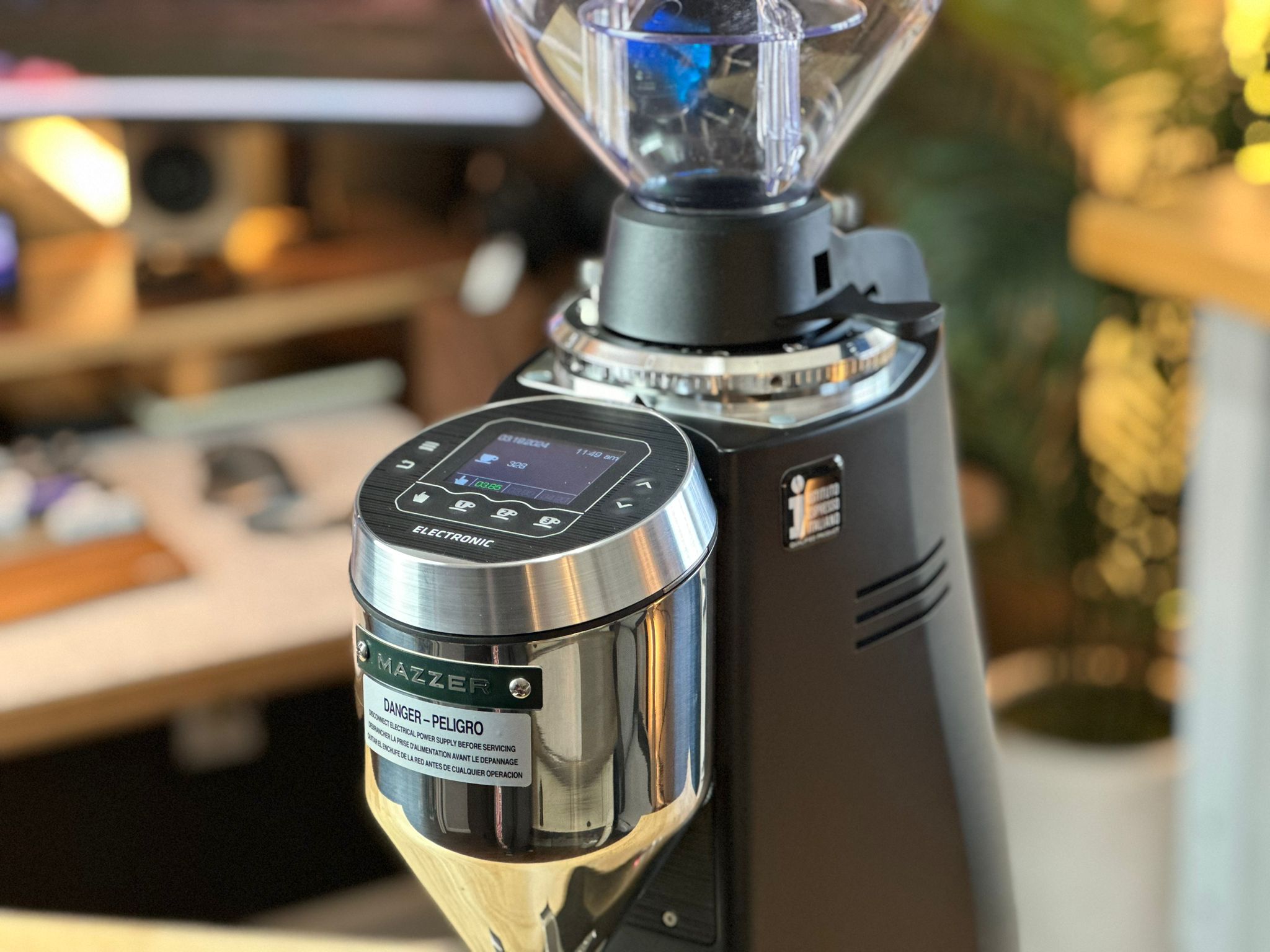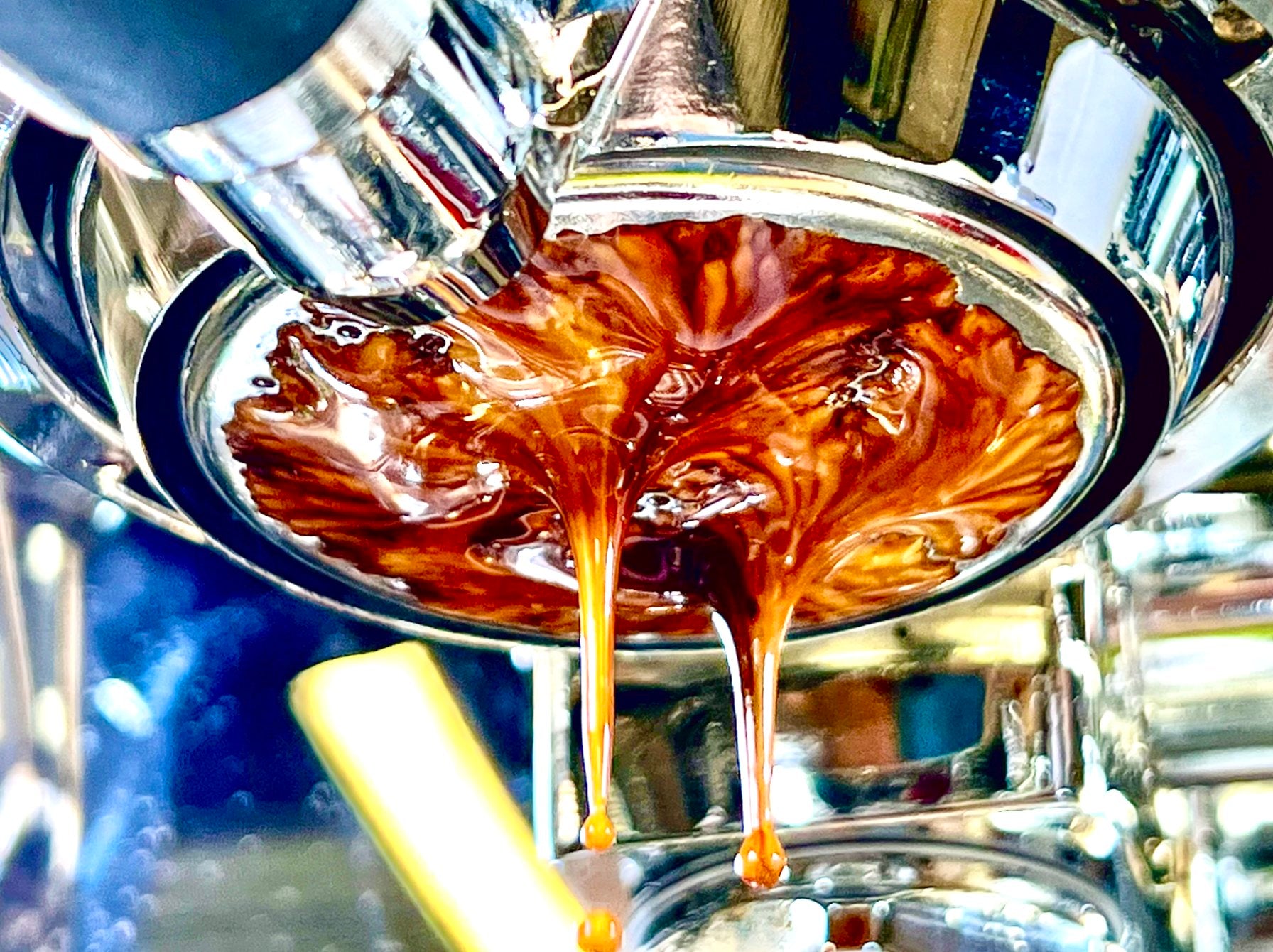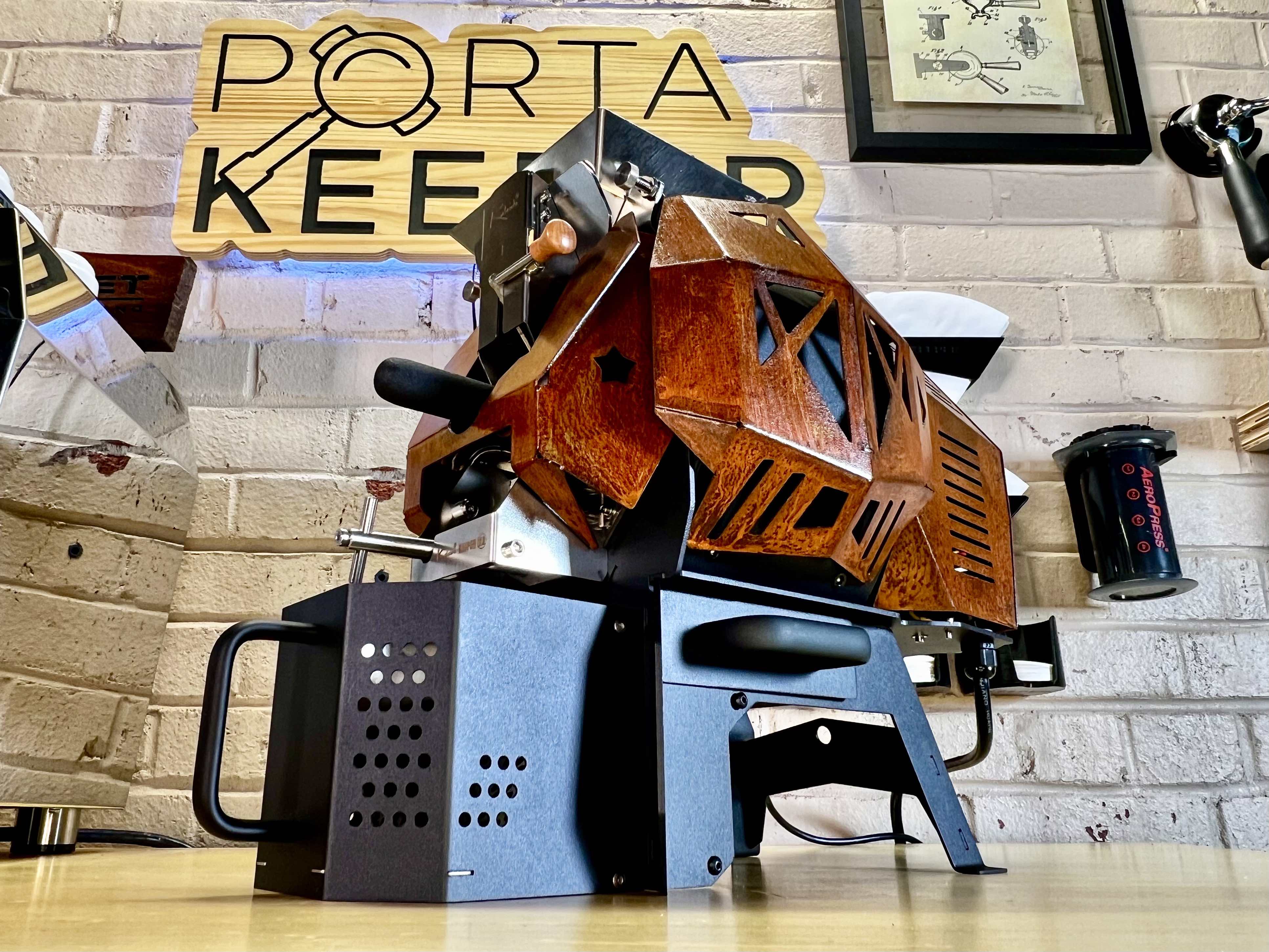Gene Cafe Coffee Roaster - In Depth Review
Commissioned Review
For most people, if you are even considering purchasing a coffee roaster, you are probably really into the hobby. Maybe not? but for most it is the next logical step. First the espresso machine or other fancy brew equipment, then the grinder, tons of accessories like bottomless portafilters, tampers, knock boxes, mats, distribution tools... the list goes on and on. The next step... the coffee roaster.
I have always been intrigued with roasting coffee. Probably 15 years ago, in a local coffee roaster shop I would see them grab a burlap bag and dump the green beans into a funnel at the top of the machine and they would sit in the drum roasting. For me, I wasn't really a part of the process, but eventually they would pull the handle to dump the beans, and I would smell that sweet caramelized aroma of fresh beans being tossed around in the cooling tray.
Fast forward a few years, getting into the prosumer espresso scene, getting some amazing single origins or expertly blended bean blends turned into a necessity as most of the store bought stuff was stale and over priced for what you get. Fast forward again about a decade, the quest for a home coffee roaster begin. I had been contemplating and worrying around roasting coffee at home for a long time. I have a friend that used to use a popcorn popper. Supposedly tasted great, and was easy to use, but just didn't seem my style. The volume was also small.
I got really serious about a home roaster when I saw one of my local roasters using the coolest miniature roaster setup! They had this next to their large roaster to use for test batch profiling and dialing in blends. I said skip the popcorn popper from the thrift shop, its time to figure out a real home roaster!
Entry level roasters can be had for $400ish, not exactly cheap. The Behmor looked like an expensive toaster oven to me but the design looked good, but maybe not quite what I wanted. I kept seeing the Gene Cafe all of a sudden. For whatever reason I had never seen this machine before. I guess its been out forever... so either I have had blinders on, or all of a sudden it has gained a ton of popularity! Looking at the design and watching a video, I had to have it. Almost a no-brainer as soon as I saw it.

The Gene cafe comes in great packaging. Everything is well protected from damage during shipment. Not many pieces and almost no assembly. The chaff box simply presses into the side of the roaster, and that's it! It also comes with a tray that holds the roasting chamber when taken out of the roaster. This is really nice for filling with green beans, but also once done, it allows the chamber to cool down. The chamber is kind of an awkward shape, so the cradle is a nice accessory! The last two items are a measuring scoop and a brush. The roasting chamber holds between 2-3 scoops of beans depending on the bean type.



The machine controls are pretty easy and intuitive. The blue dial turns the roaster on/off by pressing the knob. Rotating the knob allows you to set the roast time. The red knob is for the temperature. Rotate the knob and set the top display to the appropriate temperature and press the knob to start/stop the roast. The two numerical displays on the left, the top displays the temperature. It blinks between the actual temperature inside the roast chamber, and the desired set temperature. The bottom display is a count down timer. In a way, I wish the timer counted up, but I understand why they did countdown.
If you are using the machines cool down function simply press the red knob and the heating element will turn off and the fan will ramp up to cool the beans. I will discuss below my preference, which is to cool the beans externally. To do this, press and hold the red knob and it will cancel the cool down and stop the roast. One great thing Gene Cafe did was make it so that no matter what, when you stop the machine or it stops on its own, it will always center the roast chamber handle upwards.
Heres a video that shows the basic controls of the Gene Cafe.
Gene Cafe Coffee Roaster - Basic Controls Functions from Barrett on Vimeo.
So I am not new to coffee, but I am new to home roasting. I did the usual, watch some videos of what to do. I won't say my roasting method is the best way but it has worked well for me so far. To begin with I pre heated the machine for 5 minutes without any beans. Once warm I dumped 2 scoops of beans into the roast chamber and began to dry the beans at 320 degrees F for approximately 5 minutes. Some beans I felt needed to yellow longer, if so allow them to dry longer before ramping up the temperature.

Once the beans are dried out and begin to yellow, I ramped up the temperature to 460 degrees. The Gene Cafe ramps up to the desired temperature over several minutes. For me, first crack could be heard at about 450 degrees on this roaster, sometimes a bit hotter. First crack can be tough to hear which is a common complaint about some of the home roasters. I also noticed different beans will pop much louder than others. For me, it was almost easier to see what was going on visually. I could easily see the beans getting much larger and the chaff stuffing off the beans.

Gene Cafe Roasting from Barrett on Vimeo.

The roasting chamber has a chaff wiper in it. As the drum rotates, the wiper pushes the chaff to allow the air flow to continue through the machine. While it doesn't collect and break up all the chaff, it does help prevent the chaff from clogging the exit vent hole and catching fire.
Gene Cafe - Chaff Wiper from Barrett on Vimeo.
The chaff that gets blown through the roasting chamber ends up in the chaff box. The design of this box is great. It allows you to connect a 3 inch flexible duct to your roaster and vent the smoky smell outside of your garage or into an oven hood. To clean out the chaff box, remove the plug and dump in the trash.

Before roasting I grabbed a hand full of some already roasted beans from my local roaster as well as a hand full of unroasted green beans. Both beans were the same origin and came from the same bag. As I learned I decided I needed to see where I started and where I am heading and attempt to compare that to what an expert feels as ideal. Below is a quick comparison I did to get me going. The beans to the left are some roasted by my local roaster on a commercial machine, and to the right, are the exact same beans on the Gene Cafe roasted about a week later. Pretty close! Both tasted amazing.

Honestly, the whole process I had worried about for literally years, YEARS, was so easy... Learning what you like and how different beans roast is a learning process, but the process itself was so simple and I achieved great results without knowing very much. Most of which was visual, I roasted per some recommendations and finished the roast when the beans seemed dark enough.
While the machine does have a cool down feature, you have to think of it like this. The roasting chamber is still extremely hot, all the beans are trapped in it and the fan is not very powerful. It will continue to push some warm air into a hot chamber. Instead of relying on getting a consistent roast and not accidentally over roasting, I opted for my home made cool down rig. Its a $2 Menards bucket, an $8 colander that fit into the top of the bucket, and drilled a hole in the bucket to connect a shop vac. Dump the beans into the colander and stir with a spoon. The shop vac sucks air through the hot beans cooling them down quickly. It also sucks some of the chaff into the bucket. While this might not be required, it worked well for me, and is a popular inexpensive method for cooling the beans. For $10, it is worth the effort for consistency!
Gene Cafe - Bean Cooler from Barrett on Vimeo.
I roasted 3 batches my first day! Each batch to a medium roast took me about 20 minutes each. I pre-heated the roaster for about 5 minutes before my first batch. From never having roasted at home, to roasting 3 batches, it took less than an hour and a half. Now that I have some experience, all 3 could be done in about an hour!
Check out this time lapse of the roasting process.
Gene Cafe Roaster Time Lapse from Barrett on Vimeo.




Final thoughts:
This roaster is so easy to use, the learning curve for using the machine itself was very minimal. The art of roasting might be a different story, but yet, I was able to get some very nice beans that tasted amazing. The size of the machine while not small, is very manageable. I was expecting it to be a bit bigger from the photos initially. It is also fairly light weight, so putting it away would not be a difficult task.
I really wish I had taken the plunge a few years ago. The cost savings on great beans alone would have easily proven beneficial to me. While I wish the roaster had a bit more capacity, running two batches does not take very long, especially once the machine is heated up. The other plus of doing two roasts is it is easy to do two different origins of beans in each batch. To some people roasting weekly might seem like a task, but for me it has been very enjoyable and very easy. It usually takes me an hour to drive to the shop, buy beans, and drive home. In the same hour I can roast and enjoy the craft.
Espresso Outlet has the Gene Cafe for $585, it might not the cheapest entry level machine but offers so much bang for the buck.
https://www.espressooutlet.net/gene-cafe-cbr-101-c...
Pros:
- The design just seems to make sense to me. A rotating roasting chamber mounted at an angle works great for even roasting. A chaff collector to minimize mess, a round connector for a 3" vent hose, great easy to use controls. The plastic molding and quality of the machine seems extremely high quality. The chaff wiper inside of the roasting chamber. To me, it is turn key.
- The size of the machine really isn't that big. Its not tiny, but doesn't take up a ton of room. You should be able to easily store on a workbench. One guy noted he stores his in a duffle bag in his basement and brings to his garage once a week. Keeps it clean and portable.
- It roasts great! It is so easy to use, a person totally new to roasting did not need to know very much in order to achieve some amazing beans.
- While the machine is new to me, people that have had for many years say that parts are readily available, cheap, and the machine is simple to work on.
Cons:
- Small roasting quantity to some. Only 2-3 scoops of green beans, about 1/2 lb of beans.
- As with any roaster it probably is not a good idea to do inside the house, it will smell like roasted caramelized beans, and depending on how dark you roast your beans, you will get a fair amount of smoke. I recommend doing in a garage or patio. In my case I did in a garage with a vent hose. Worked perfect!
- While the roasting chamber has a chaff wiper, and the side of the machine has a chaff collector, you will still get a descent quantity of chaff that will get stuck inside the roasting chamber. Every bean is different, so some will be worse than others. Not a huge deal, and doesn't really mean much at the end of the day, just will notice some chaff in your finished beans.
- A con that many of these home roasting units have is the fact that cooling down the beans quickly usually means taking the beans out of the machine and cooling in a strainer. While this machine does have a cool down feature, many people seem to get inconsistent roasts using it.
- The caff wiper is kind of loud. Every rotation of the drum you get a clunk, and sometimes a scape noise. This noise can be confused as the cracking sound at times. No deal breaker, but when you are getting used to roasting with the Gene Cafe you will most likely say "is it the wiper or is it cracking?"
A few misc items I recommend getting with the machine is a 3" metallic duct. It is a smaller dryer duct used for bathroom vent fans. Mine was about $20. I also recommend a cheap bucket/strainer/shopvac bean cooler. Since I had a shop vac, the rest of the parts cost less than $10. If you didn't want to make this, a cookie sheet would probably work quite well to cool down the beans. Lastly, while not needed, I used a laser thermometer to see how hot the roasted beans were when dumped into the strainer and to track the cool down time. It was not necessarily needed, but I was able to watch my 400+ degree F beans cool down to less than 100 Deg F within 2-3 minutes.




